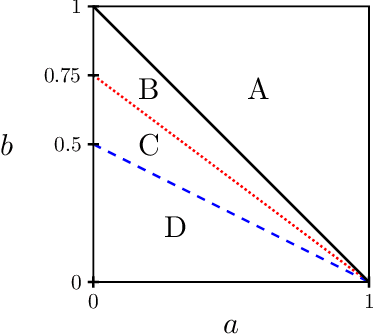Information-Theoretic Thresholds for Planted Dense Cycles
Paper and Code
Feb 01, 2024
We study a random graph model for small-world networks which are ubiquitous in social and biological sciences. In this model, a dense cycle of expected bandwidth $n \tau$, representing the hidden one-dimensional geometry of vertices, is planted in an ambient random graph on $n$ vertices. For both detection and recovery of the planted dense cycle, we characterize the information-theoretic thresholds in terms of $n$, $\tau$, and an edge-wise signal-to-noise ratio $\lambda$. In particular, the information-theoretic thresholds differ from the computational thresholds established in a recent work for low-degree polynomial algorithms, thereby justifying the existence of statistical-to-computational gaps for this problem.
* 31 pages, 1 figure
 Add to Chrome
Add to Chrome Add to Firefox
Add to Firefox Add to Edge
Add to Edge